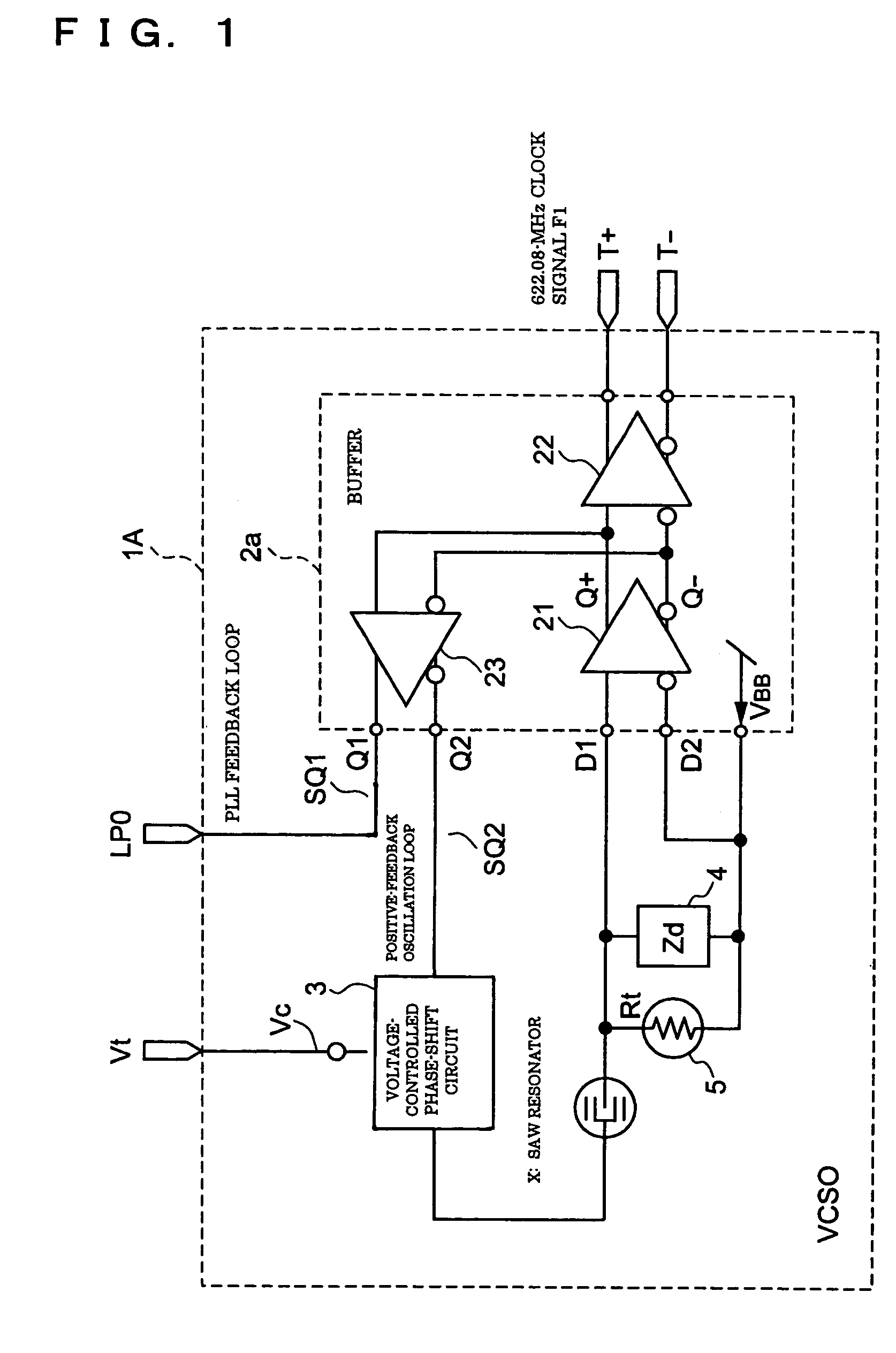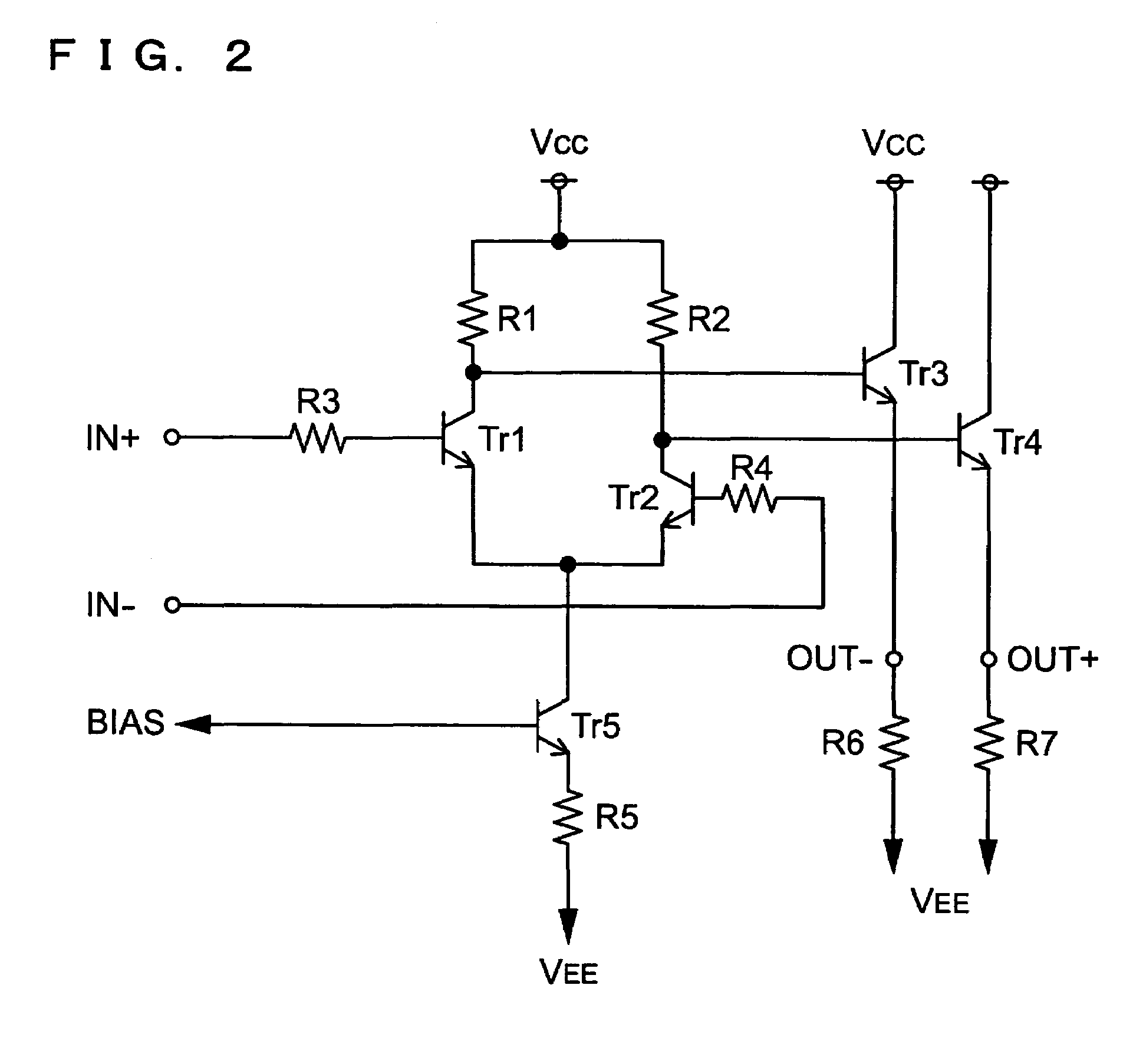Voltage-controlled oscillator, clock converter, and electronic device
a voltage control and clock converter technology, applied in the direction of heat measurement, optical radiation measurement, instruments, etc., can solve the problems of reducing the necessary frequency variable range, requiring a wider frequency variable range of voltage-controlled saw oscillators, and reducing the frequency variable range. , to achieve the effect of stable data transmission and reception, high accuracy, and significant reduction of unnecessary jitter
- Summary
- Abstract
- Description
- Claims
- Application Information
AI Technical Summary
Benefits of technology
Problems solved by technology
Method used
Image
Examples
second embodiment
[0145]A second embodiment will now be described.
[0146]FIG. 17 is a block diagram of a voltage-controlled SAW oscillator (VCSO) 1B according to the second embodiment.
[0147]The difference from FIG. 1 is to use an amplifier having a single input / output in place of the differential amplifier. More specifically, a plurality of amplifiers 32-1 to 32-n and 33 are connected to the output of an oscillating amplifier 31 in parallel, and used as the feedback buffer amplifier 33 forming a positive-feedback oscillation loop and the output amplifiers 32-1 to 32-n being used to output signals to the outside.
[0148]Referring to FIG. 17, a buffer 2b uses the amplifiers 31, 32-1 to 32-n, and 33 each having a single input / output in place of the differential amplifiers shown in FIG. 1. The plurality of amplifiers 32-1 to 32-n and the feedback buffer amplifier (second amplifier) 32 are connected to the output stage of the oscillating amplifier (first amplifier) 31 in parallel. The oscillating amplifier 3...
third embodiment
[0154]A third embodiment will now be described.
[0155]FIG. 18 is a block diagram of a clock converter according to the third embodiment.
[0156]In this embodiment, a clock converter incorporating the voltage-controlled SAW oscillator 1A described in the first embodiment will be described. The clock converter is characterized in that the feedback-loop output terminal LP0 of the voltage-controlled SAW oscillator 1A using the SAW resonator X, improved in a frequency temperature characteristic, is used to form a feedback loop. More specifically, any of the plurality of output signals of the feedback-buffer differential amplifier 23 constructing the voltage-controlled SAW oscillator 1A, shown in FIG. 1, is used as a feedback-loop output signal.
[0157]A clock converter 50a shown in FIG. 18 includes a phase comparing section 55, a loop filter (LPF) 53, and the voltage-controlled SAW oscillator 1A. The phase comparing section 55 includes an input frequency divider circuit (division ratio: 1 / P) ...
first modification
[0182]While the amplifiers according to the embodiments have been described with reference to ones using a bipolar transistor, a MOS transistor, which is a different type of transistor, may be used.
PUM
 Login to View More
Login to View More Abstract
Description
Claims
Application Information
 Login to View More
Login to View More - R&D
- Intellectual Property
- Life Sciences
- Materials
- Tech Scout
- Unparalleled Data Quality
- Higher Quality Content
- 60% Fewer Hallucinations
Browse by: Latest US Patents, China's latest patents, Technical Efficacy Thesaurus, Application Domain, Technology Topic, Popular Technical Reports.
© 2025 PatSnap. All rights reserved.Legal|Privacy policy|Modern Slavery Act Transparency Statement|Sitemap|About US| Contact US: help@patsnap.com



